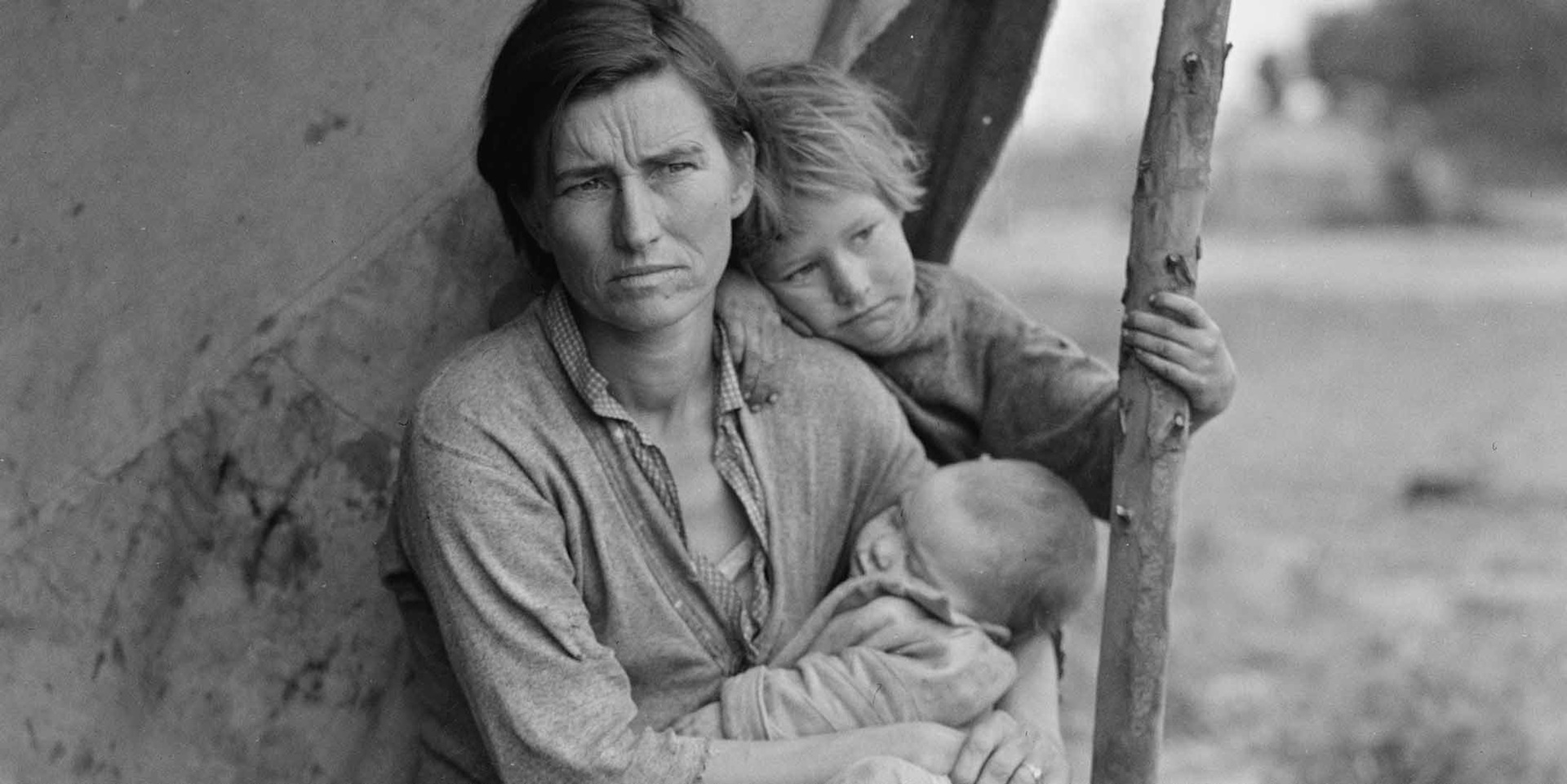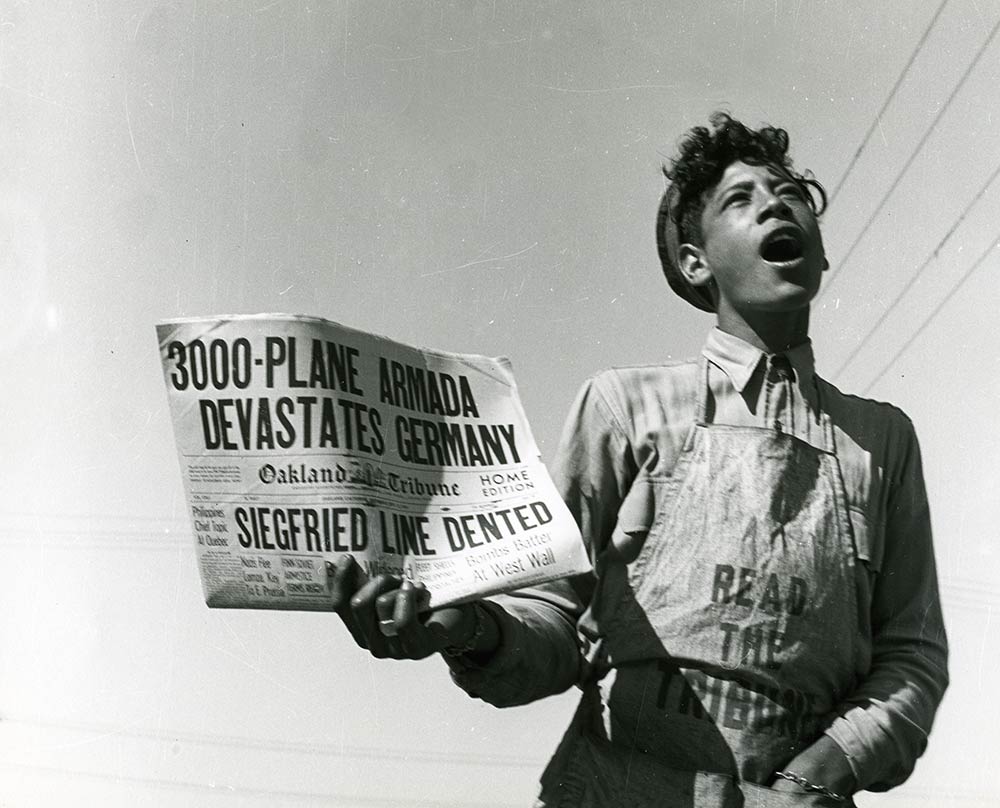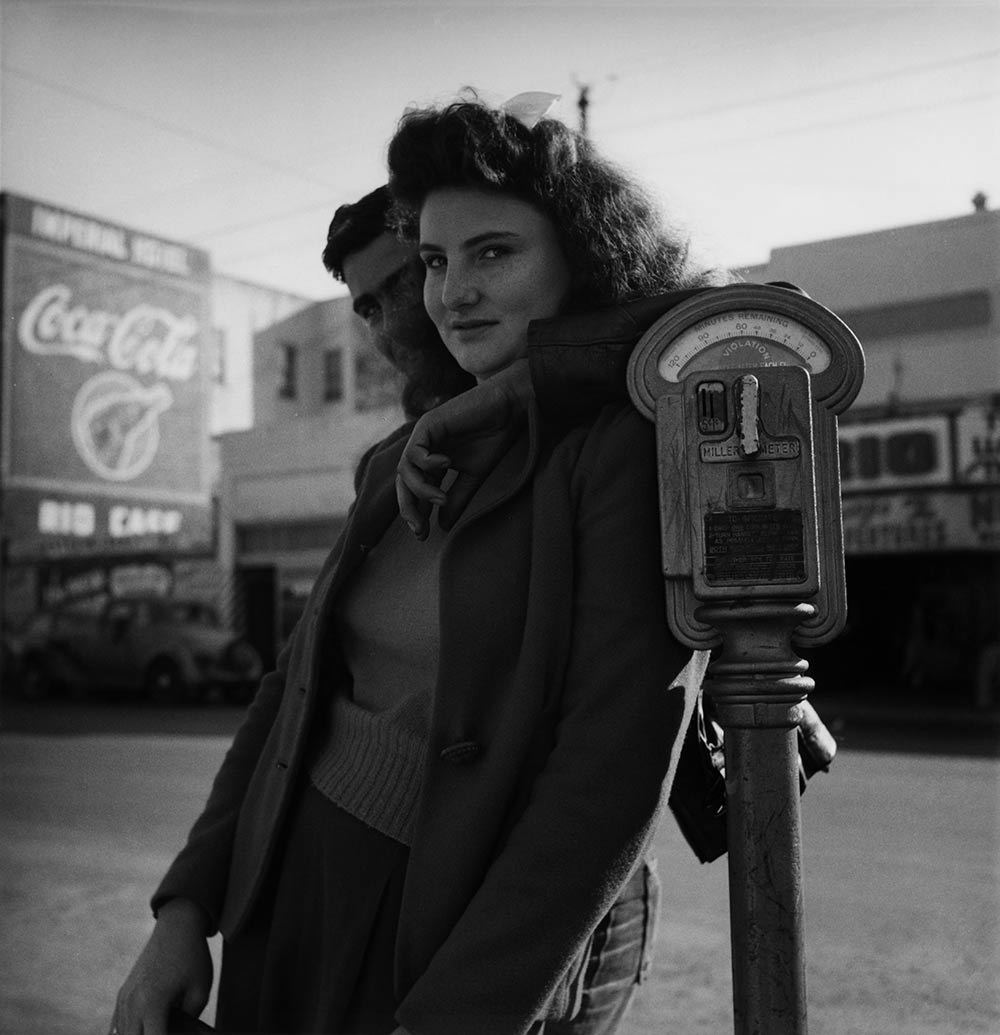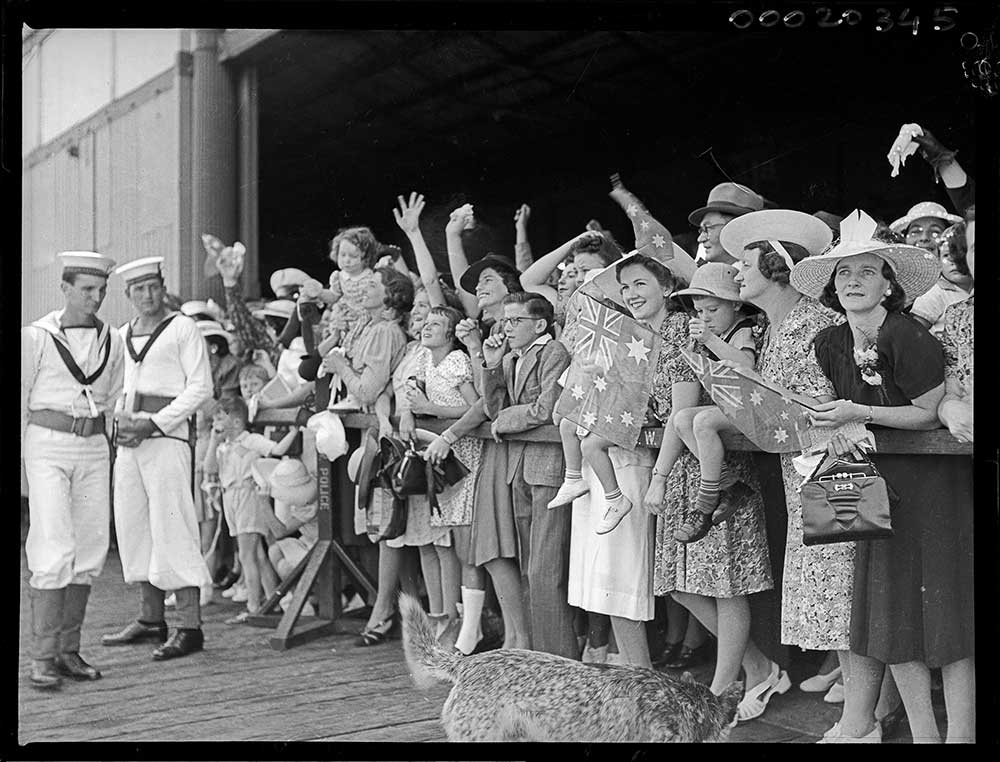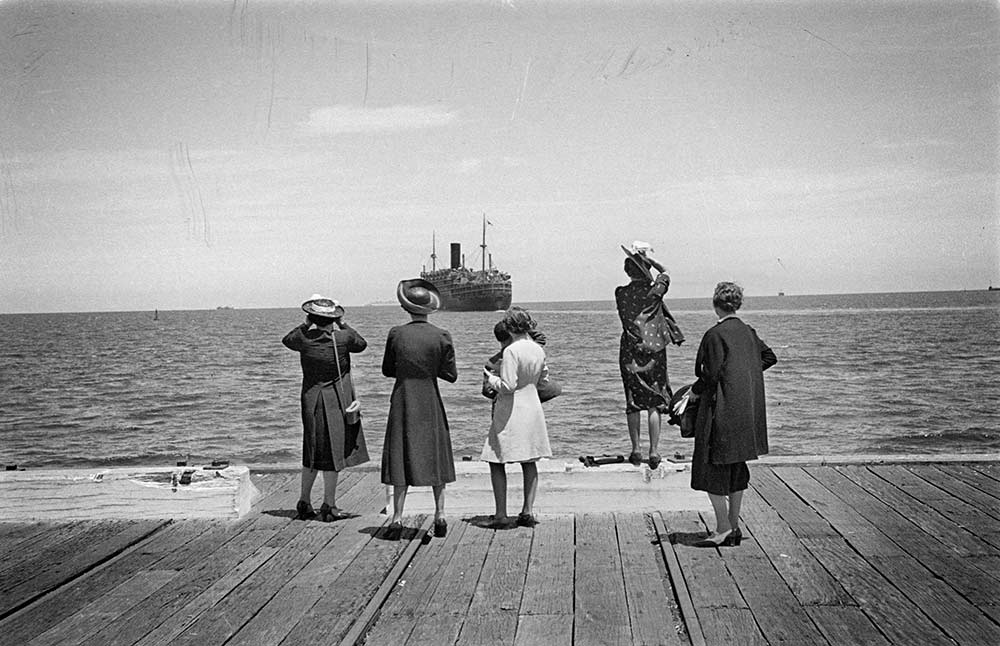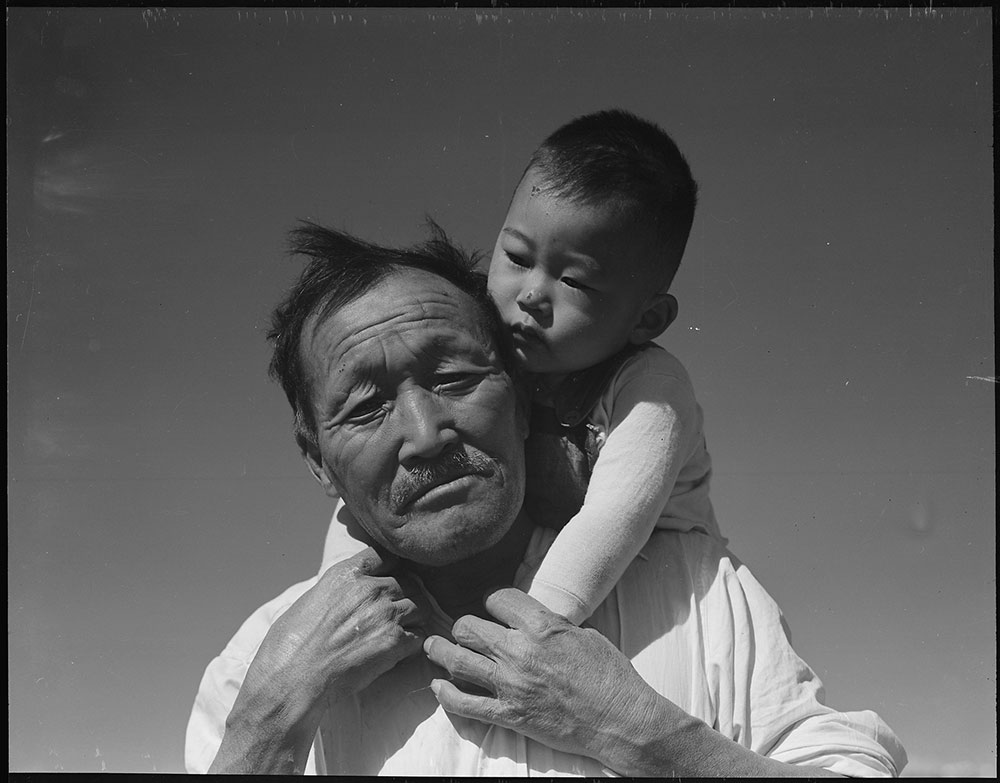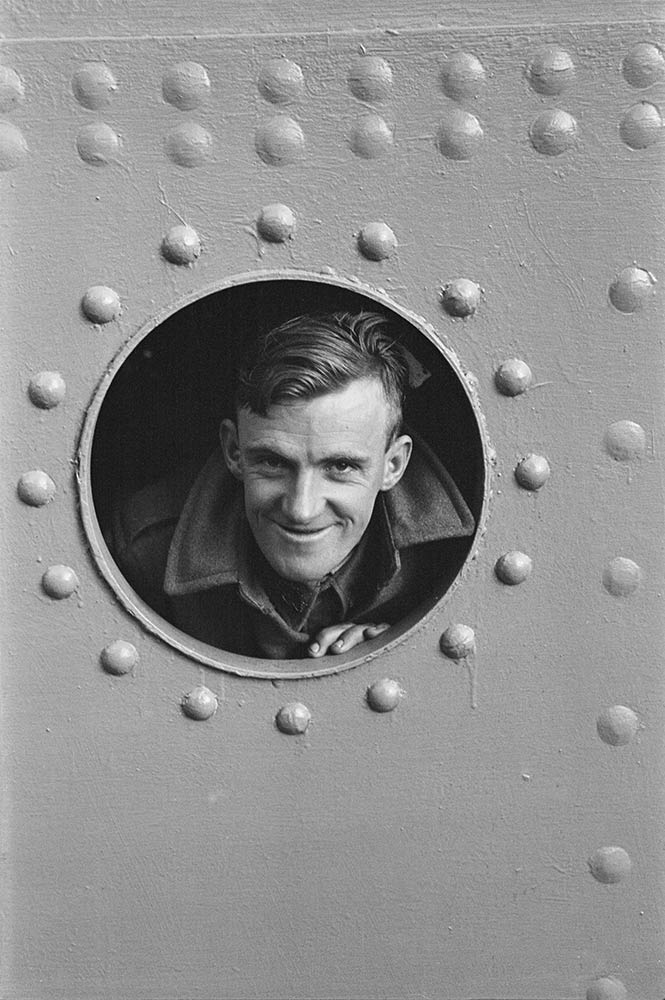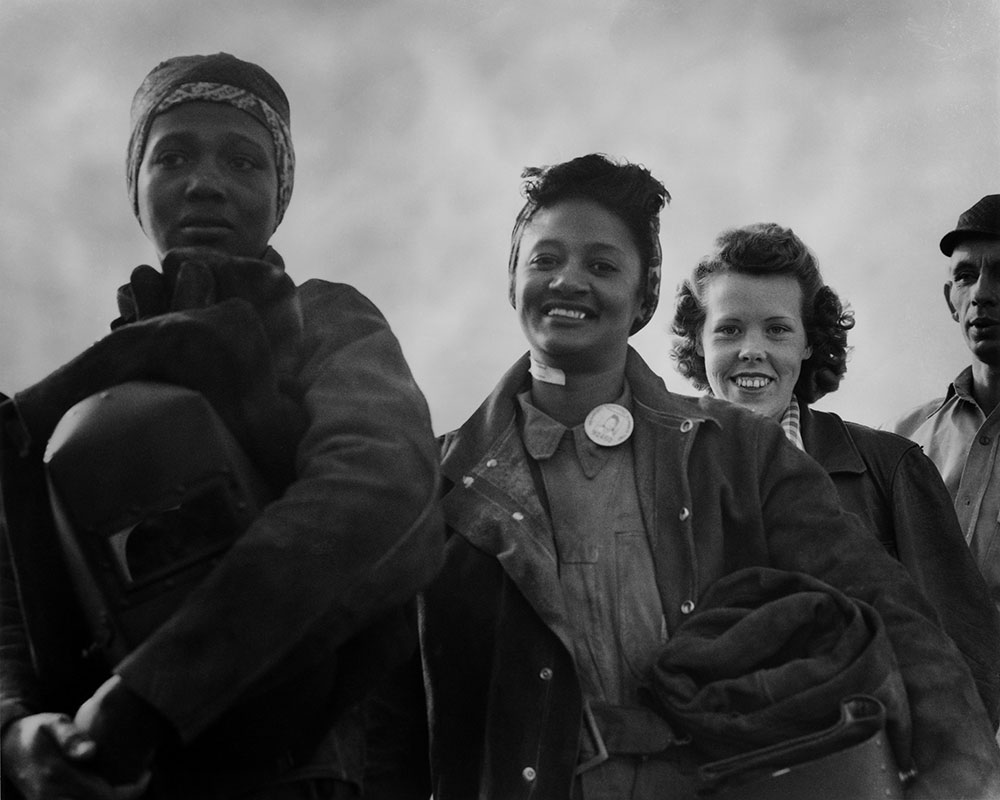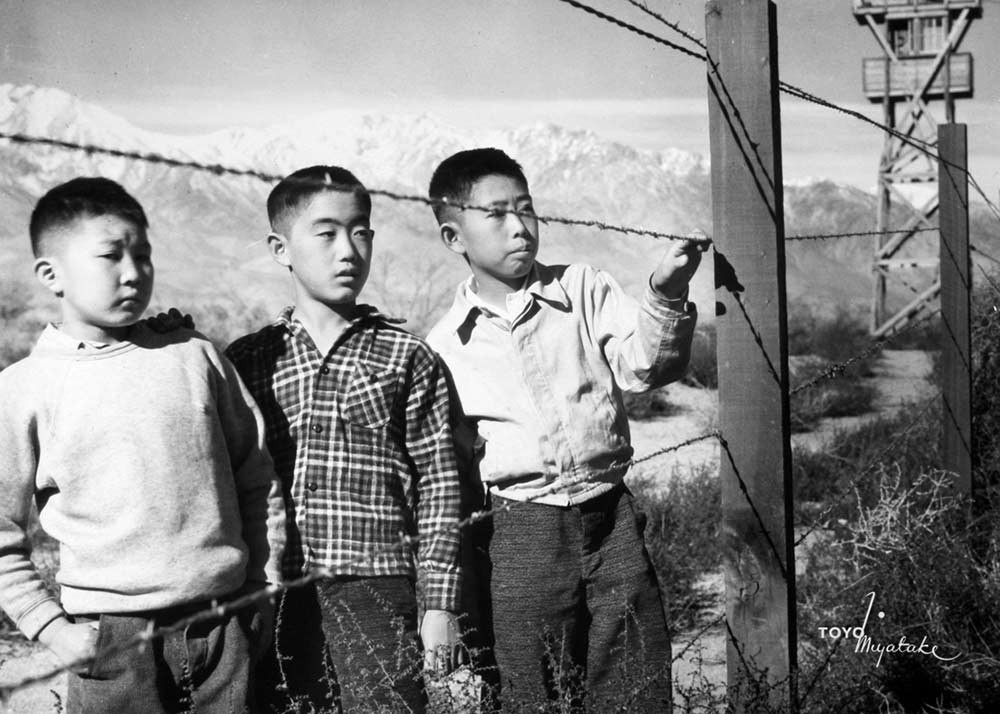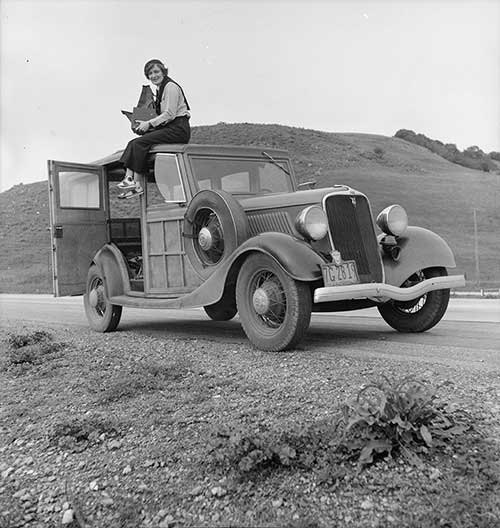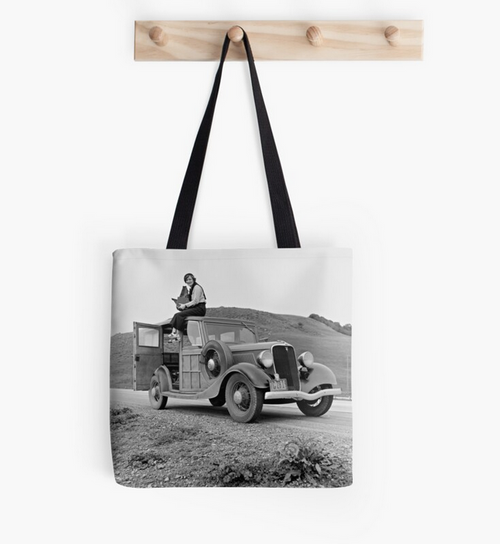Featuring photographs by Dorothea Lange, Toyo Miyatake and Australian wartime photographers.
Life at home in a world at war.
Famous American photographer Dorothea Lange established her reputation as a documentarian when she was commissioned by the government to travel the United States in the 1930s to capture and reveal the devastation wrought on Americans by The Great Depression.
During WWII Lange was commissioned by the US Office of War Information to photograph America’s factories, shipyards and farms as the nation went to war.
Her unvarnished depictions of the forced internment of Japanese Americans from coastal California to inland camps in 1942 were considered too realistic and raw for public consumption and Ansel Adams was commissioned to document the desolate camp at Manzanar in a better light.
